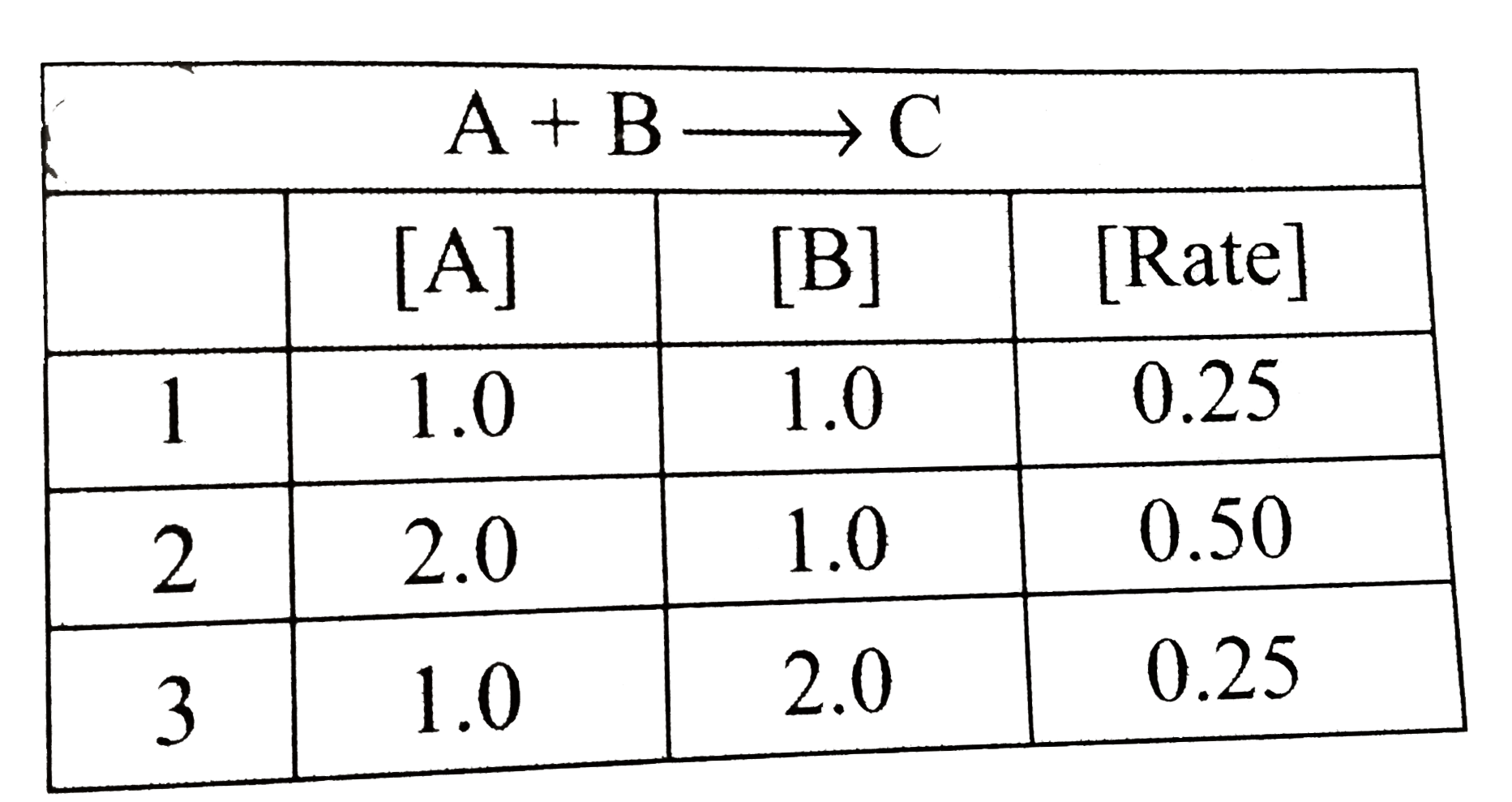For a chemical reaction , the rate of appearance of is . The rate of diappearance of will be
The correct Answer is:C
To find the rate of disappearance of X for the reaction 2X+Y→Z, we can follow these steps:
Step 1: Understand the relationship between the rates of reaction
For the reaction 2X+Y→Z, the stoichiometry tells us that:
- 2 moles of X disappear for every 1 mole of Z that appears.
Step 2: Write the rate expressions
The rate of disappearance of X (−d(X)dt) and the rate of appearance of Z (d(Z)dt) are related by their stoichiometric coefficients. We can express this relationship as:
−12d(X)dt=d(Z)dt
This means that the rate of disappearance of X is twice the rate of appearance of Z.
Step 3: Substitute the given rate of appearance of Z
We are given that the rate of appearance of Z is:
d(Z)dt=0.05mol L−1min−1
Step 4: Calculate the rate of disappearance of X
Using the relationship established in Step 2, we can express the rate of disappearance of X as:
−d(X)dt=2×d(Z)dt
Substituting the value of d(Z)dt:
−d(X)dt=2×0.05mol L−1min−1=0.1mol L−1min−1
Step 5: Write the final answer
Thus, the rate of disappearance of X is:
d(X)dt=0.1mol L−1min−1
Summary
The rate of disappearance of X is 0.1mol L−1min−1.
---
For the reaction 2X+Y→Z, the stoichiometry tells us that:
- 2 moles of X disappear for every 1 mole of Z that appears.
The rate of disappearance of X (−d(X)dt) and the rate of appearance of Z (d(Z)dt) are related by their stoichiometric coefficients. We can express this relationship as:
−12d(X)dt=d(Z)dt
This means that the rate of disappearance of X is twice the rate of appearance of Z.
We are given that the rate of appearance of Z is:
d(Z)dt=0.05mol L−1min−1
Using the relationship established in Step 2, we can express the rate of disappearance of X as:
−d(X)dt=2×d(Z)dt
Substituting the value of d(Z)dt:
−d(X)dt=2×0.05mol L−1min−1=0.1mol L−1min−1
Thus, the rate of disappearance of X is:
d(X)dt=0.1mol L−1min−1
The rate of disappearance of X is 0.1mol L−1min−1.
Topper's Solved these Questions
- CHEMICAL KINETICSBOOK - CENGAGE CHEMISTRY ENGLISHCHAPTER - CHEMICAL KINETICSEXERCISE - Exercises Assertion-Reasoning
22 Videos
- CHEMICAL KINETICSBOOK - CENGAGE CHEMISTRY ENGLISHCHAPTER - CHEMICAL KINETICSEXERCISE - Exercises Integer
15 Videos
- CHEMICAL KINETICSBOOK - CENGAGE CHEMISTRY ENGLISHCHAPTER - CHEMICAL KINETICSEXERCISE - Exercises Multiple Correct
33 Videos
- CARBOXYLIC ACIDS AND THEIR DERIVATIVESBOOK - CENGAGE CHEMISTRY ENGLISHCHAPTER - CARBOXYLIC ACIDS AND THEIR DERIVATIVESEXERCISE - Exercises Archives (Analytical And Descriptive)
34 Videos
- COORDINATION COMPOUNDSBOOK - CENGAGE CHEMISTRY ENGLISHCHAPTER - COORDINATION COMPOUNDSEXERCISE - Archives Subjective
18 Videos
Similar Questions
Knowledge Check
Consider the reaction, 2N2O5→4NO2+O2 In the reaction NO2 is being formed at the rate of 0.0125 mol L−1s−1. What is the rate of reaction at this time?
A0.0018 mol L−1s−1B0.0031 mol L−1s−1C0.0041 mol L−1s−1D0.050 mol L−1s−1Calculate the half life of the reaction A→B, when the initial concentration of A is 0.01molL−1 and initial rate is 0.00352molL−1min−1. The reaction is of the first order
A19.69 minB1.969 minC7.75 minD77.5 min
For a reaction , 2A+D→3C, the rate of appearance of C at time t is 1.2×10−4mol L−1s−1 . Find the rate of reaction.
View Solution
Rate is expressed in molL−1−1min.
In the above reaction, the order is
View SolutionFor a first order for the reaction A→ products : the rate of reaction at [A]=0.2M is 1.0×10−3molL−1s−1. The reaction will occur to 75% completion in .
View SolutionFor the reaction X+3Y→Z, which form of differential rate law is incorrect?
View SolutionThe following reaction was carried out in water :
Cl2+2Iɵ→I2+2Clɵ
The initial concentration of Iɵ was 0.25molL−1 and the concentration after 10min was 0.23molL−1. Calculate the rate of disappearance of Iɵ and rate of appearance of I2.
View SolutionIf the rate constant k of a reaction is 1.6×10–3(mol/l)(–min1) . The order of the reaction is:
View Solution
